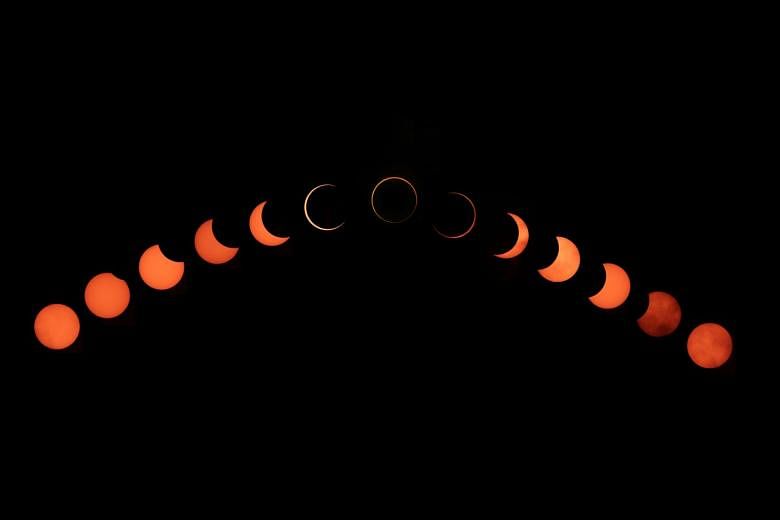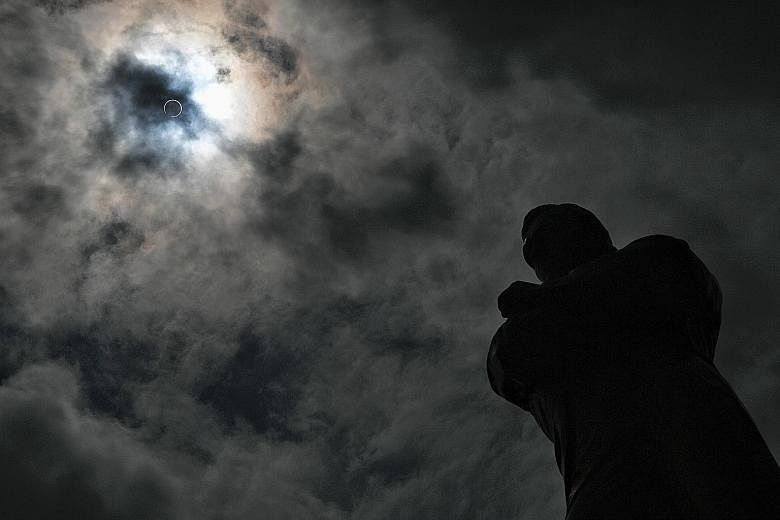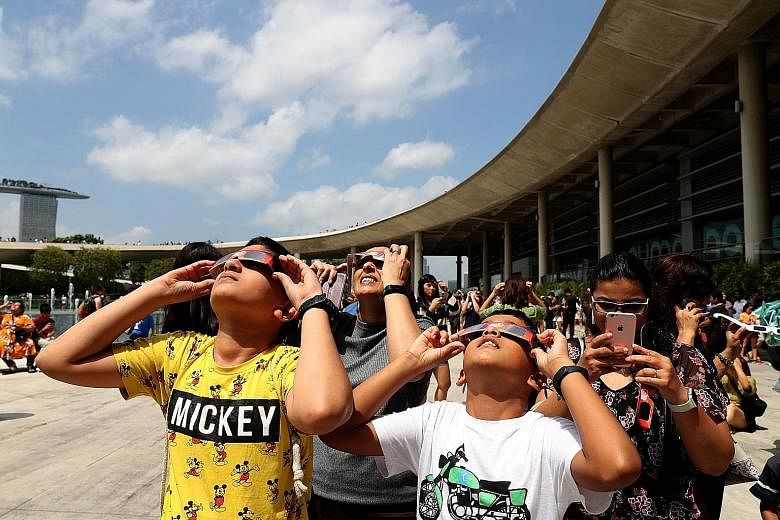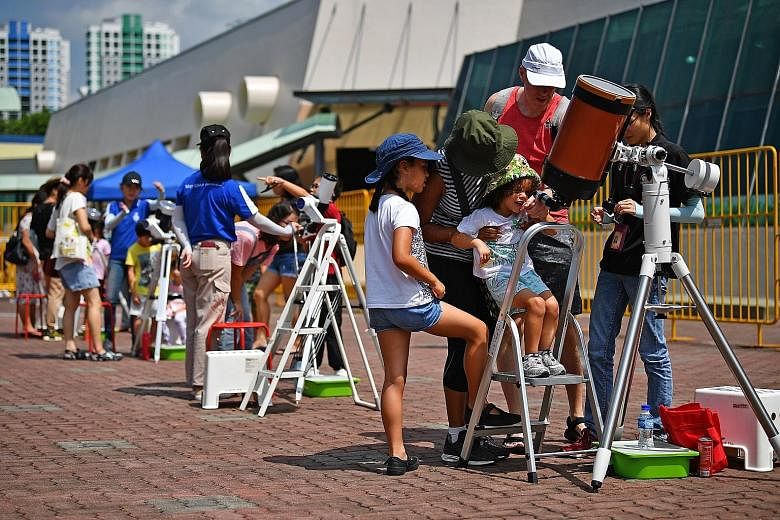It has been nearly 70 years since housewife Lu Lizhu last saw an eclipse and that was "a very different experience" from yesterday's marvel.
"I was in my teens then," she told The Straits Times at the amphitheatre in front of Block 134 Ang Mo Kio Avenue 3. "When the eclipse happened, my dad told me to bring out the drums into the street so we could make as much noise as possible to save the Moon. It was what we believed in the kampung."
Madam Lu, 80, was one of thousands across the island who raised their eyes to the skies to catch the annular solar eclipse yesterday.
At the Science Centre Singapore in Jurong, a loud cheer rose from the 4,500 or so onlookers as the Moon moved to obscure the Sun at 1.23pm and form a "ring of fire", in what has been dubbed the "greatest astronomical event in Singapore".
Many went with young children and elderly parents to the centre, one of several popular viewing spots. People began queueing at 9am for the 6,000 or so solar viewing glasses available at the centre. These were sold out by 1.15pm.
Science Centre staff were stationed at 12 telescopes set up near the centre's ecogarden to help people adjust the settings for "a sight to behold". Some people brought hats, mats, stools and umbrellas for the wait under the hot sun before the eclipse began at about 11.30am.
It peaked at 1.24pm, when 94 per cent of the Sun was obscured, leaving its outer edges visible in a "ring of fire" while casting a shadow that momentarily dimmed the island.
The phenomenon lasted until about 3.20pm.
Others intent on recording the moment came armed with cameras, fixed with solar films, on tripod stands to photograph the rare sight.
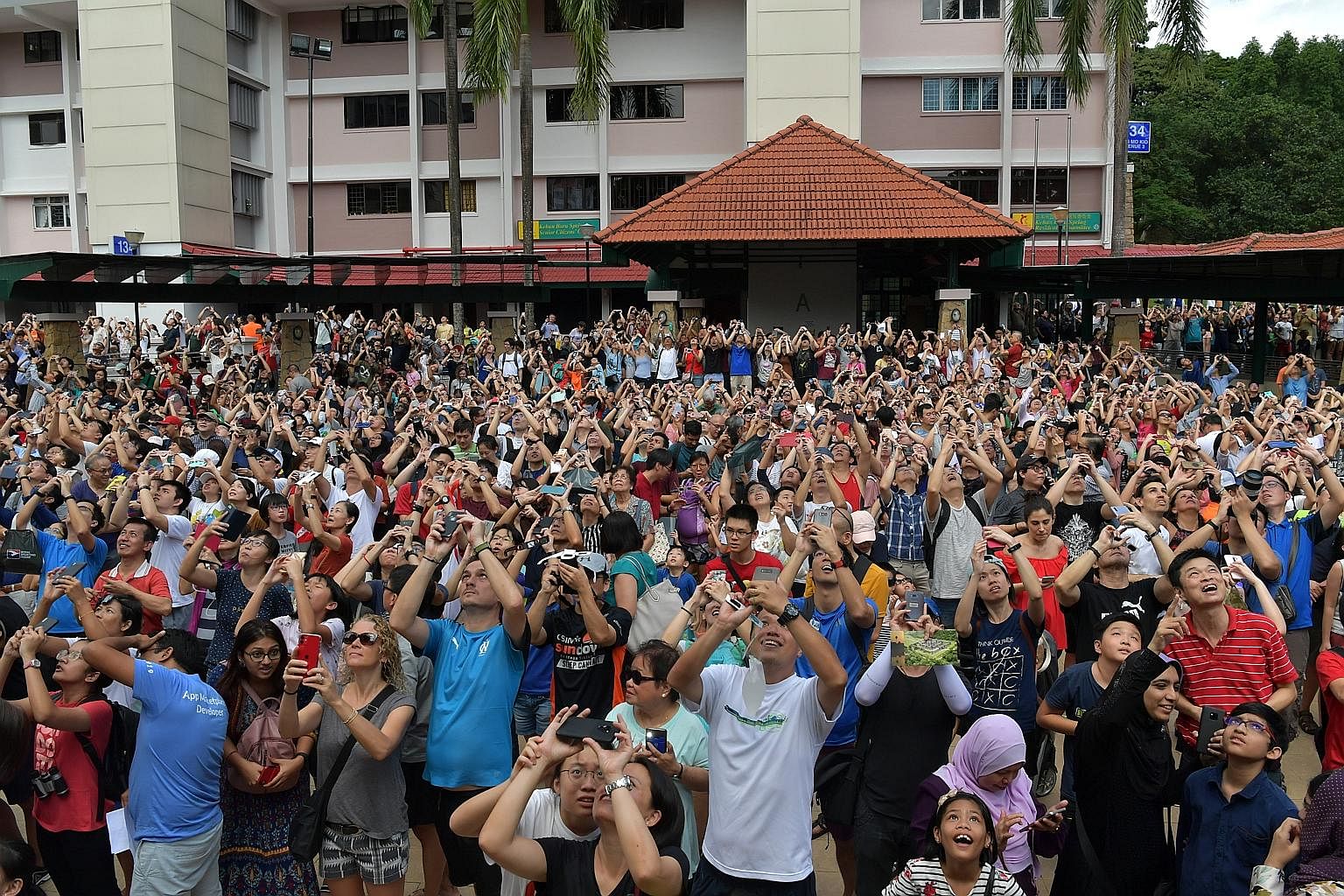
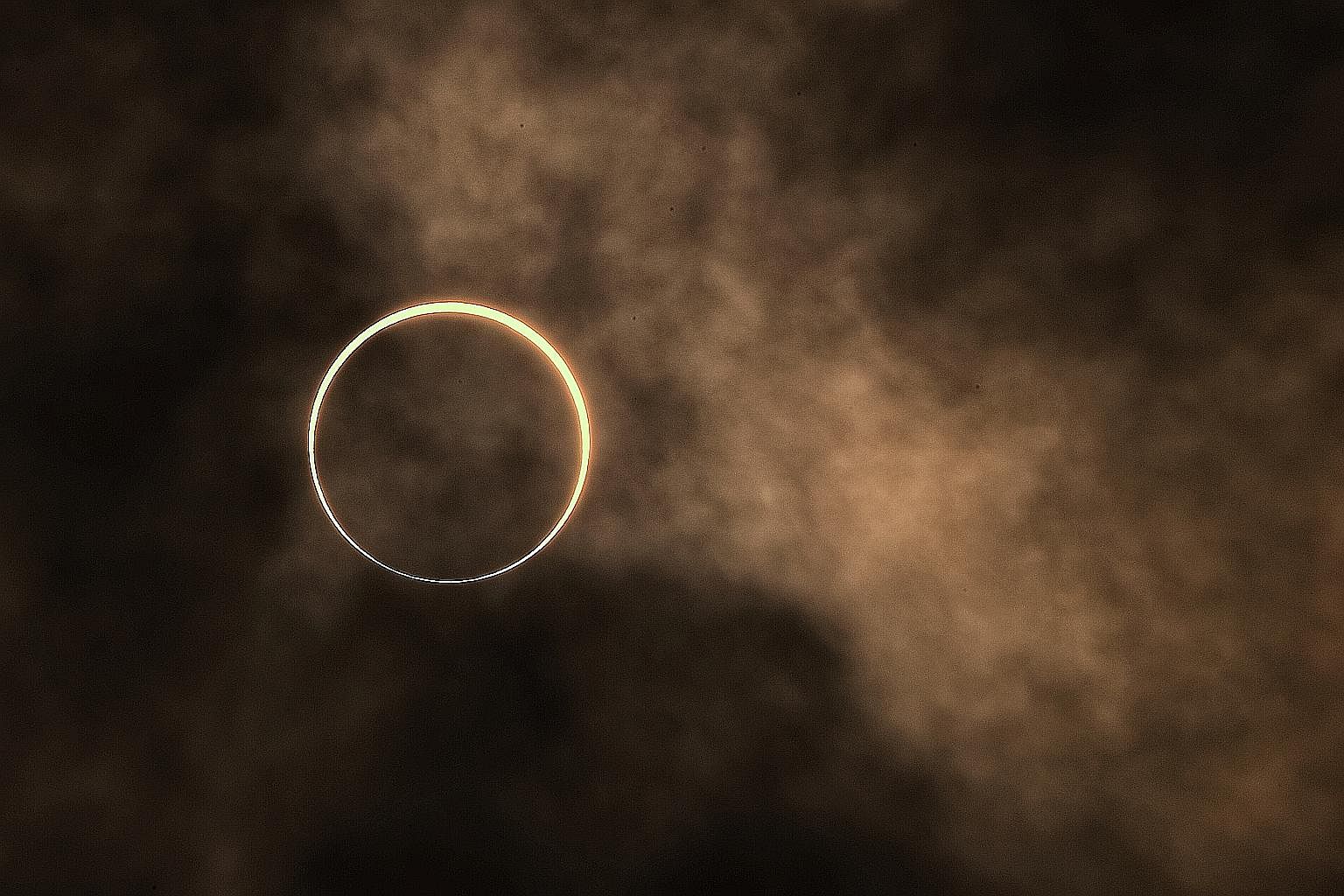
"It's much better when you see it with your own eyes rather than on television or in photos," said Ms Nurul Huda, 27, who was at the Science Centre. "This may be the first and last time I'm seeing this - it is indeed a once-in-a-lifetime experience for me," said Ms Huda, who is in between jobs.
The annular solar eclipse occurs when the Moon covers the centre of the Sun, giving the appearance of a fiery ring around it. It differs from a total solar eclipse in that the Moon covers the Sun's centre but is too far from the Earth to entirely blot out the Sun, resulting in a dark circle bordered by a "ring of fire".
The sight in the Singapore sky was visible for the first time in two decades, and will next appear in 2063.
Associate Professor Lim Tit Meng, chief executive of Science Centre Singapore, said: "It is a once-in-a-lifetime sight for many, and the large turnout at the Science Centre Singapore's viewing events underpins how people are naturally curious about what lies beyond."
He added that the 4,500 turnout was almost double that of the last astronomy-related event at the centre in July, when a movie screening was held to celebrate the 50th anniversary of the Moon landing.
Prime Minister Lee Hsien Loong, who is on leave, joined many in Singapore who staked out different spots across the island to view the rare phenomenon. He posted on Facebook a photo of the annular solar eclipse that he snapped at Gardens by the Bay, explaining how he captured the image on his camera.
"The skies were a little cloudy, but fortunately, at the critical moment the Sun (and Moon) peeped through!" he wrote on Facebook.
At National Junior College (NJC), home to the largest and highest-resolution amateur-class solar telescope in Singapore, more than a thousand people gathered to catch the eclipse.
Mrs Ophelia See, a 40-year-old housewife who was with her two daughters aged two and seven, said it was "a good opportunity for (my children) to learn about science".
Mr Alfred Tan, 59, vice-principal of administration at NJC and a solar astronomer with 10 years of experience, was slightly disappointed that clouds partially obscured the eclipse at one point.
However, the most important thing was not witnessing the eclipse, but providing people with the opportunity to learn and spend quality time with friends and family.
"This is what motivates me," Mr Tan said, referring to his overnight stay at the school to set up all the solar telescopes.
He added that to see the next such eclipse, he will "have to live to more than 100 years old, and that eclipse will not be as spectacular".
His school's eclipse-viewing event was organised with the help of 44 student volunteers from NJC's basketball club.
Readers can share their photos of the eclipse with The Straits Times by using #sgeclipse when posting on Instagram.
• Additional reporting by Clement Yong
